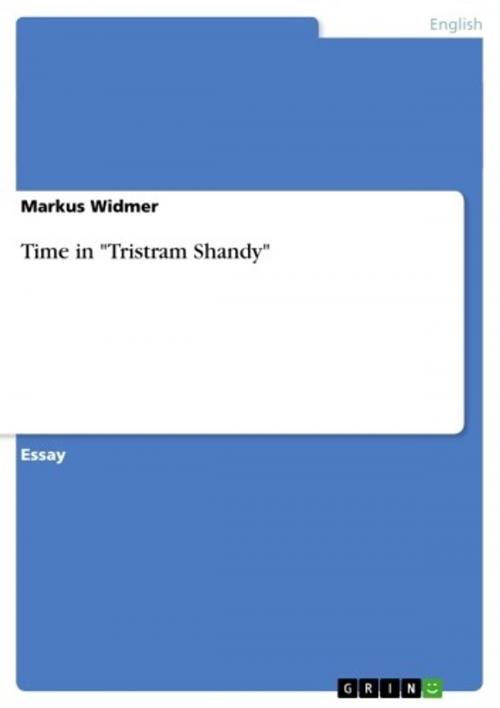| Author: | Markus Widmer | ISBN: | 9783638200936 |
| Publisher: | GRIN Verlag | Publication: | June 30, 2003 |
| Imprint: | GRIN Verlag | Language: | English |
| Author: | Markus Widmer |
| ISBN: | 9783638200936 |
| Publisher: | GRIN Verlag |
| Publication: | June 30, 2003 |
| Imprint: | GRIN Verlag |
| Language: | English |
Essay from the year 1998 in the subject English Language and Literature Studies - Literature, grade: 1 (A), University of Aberdeen (English Department), course: Tristram Shandy, 4 entries in the bibliography, language: English, abstract: Metafiction, according to Patricia Waugh, consists of 'the construction of a fictional illusion (as in traditional realism) and the laying bare of that illusion'. Tristram Shandy, I will argue in this essay, undermines fictional illusion by foregrounding 'the most fundamental set of all narrative conventions: those concerning the representations of time' (Waugh 70). I will exemplify this by trying to apply a conventional set of narratological terms to Tristram Shandy. I will show that these terms, which are based on conventional narratives, are neither exhaustive nor distinctive when one tries to use them for Tristram Shandy. Narrative fiction, Rimmon-Kenan states, has three main aspects: story, text and narration: 'Story' designates the narrated events, abstracted from their disposition in the text and reconstructed in their chronological order, together with the participants in these events. Whereas 'story' is a succession of events, 'text' is a spoken or written discourse which undertakes their telling. ... Time is essential for all of these three aspects, as will become clear in my discussion. Time in itself, following Rimmon-Kenan, can be viewed in three respects: order, duration, and frequency (p. 46). I will focus on the first two aspects since they are more essential to the novel than frequency.4 Finally, I will discuss whether, after my discussion of Tristram Shandy's time structure, one can conclude that the novel is a metafiction according to Waugh's definition of the term.
Essay from the year 1998 in the subject English Language and Literature Studies - Literature, grade: 1 (A), University of Aberdeen (English Department), course: Tristram Shandy, 4 entries in the bibliography, language: English, abstract: Metafiction, according to Patricia Waugh, consists of 'the construction of a fictional illusion (as in traditional realism) and the laying bare of that illusion'. Tristram Shandy, I will argue in this essay, undermines fictional illusion by foregrounding 'the most fundamental set of all narrative conventions: those concerning the representations of time' (Waugh 70). I will exemplify this by trying to apply a conventional set of narratological terms to Tristram Shandy. I will show that these terms, which are based on conventional narratives, are neither exhaustive nor distinctive when one tries to use them for Tristram Shandy. Narrative fiction, Rimmon-Kenan states, has three main aspects: story, text and narration: 'Story' designates the narrated events, abstracted from their disposition in the text and reconstructed in their chronological order, together with the participants in these events. Whereas 'story' is a succession of events, 'text' is a spoken or written discourse which undertakes their telling. ... Time is essential for all of these three aspects, as will become clear in my discussion. Time in itself, following Rimmon-Kenan, can be viewed in three respects: order, duration, and frequency (p. 46). I will focus on the first two aspects since they are more essential to the novel than frequency.4 Finally, I will discuss whether, after my discussion of Tristram Shandy's time structure, one can conclude that the novel is a metafiction according to Waugh's definition of the term.















